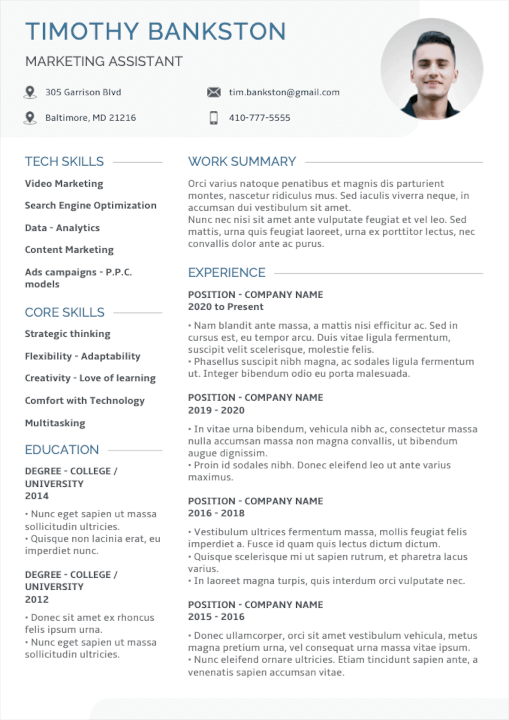As long as you know the rules – unwritten – the exercise of writing a resume is not a complicated task.
By definition, your resume is a comprehensive document that details your training steps, your professional skills and your career.
In practice, this is your passport to get an interview and then seek a job. It must be clear, understandable and attractive, corresponding to the position your potential employers have to offer.
Step 1: Information, discussion and resources
To write a resume, it is necessary to :
find an old resume of yours (if available), your diplomas, certificates of employment or pay slips, patents, internship reports, certification and a recent passport photo.
be clear with your professional objective and therefore for the desired function in order to document your skills and qualities required for this position.
choose the arguments to put forward: like your best achievements, proven results, known and recognized competencies, strengths and extra professional results.
be certain to have a word processor or a resume builder app.
Step 2: grouping of information
What are the relevant details for my resume and how to organize them?
We will gather this information by topic, which then will become the sections of your resume.
personal information : name and all the necessary information to contact you: complete postal mailing address, telephone number and e-mail address. If you feel it relevant, age, family status and owned driver’s license(s).
the desired field : the position you are applying for. Be certain to add your specialty and more if necessary. You can also include an “Objective” section to clarify and detail the position or function sought after.
professional experience : for each job held, the name of the company, the industry or field of activity, the size of the company, the start and end dates of the contract, the position held and a summary of your key activities, the tasks performed, your responsibilities and your specific know-how.
training : education: degrees obtained, when and in what schools. Internships: company or enterprise, duration, tasks completed. Professional training: provide skills, certifications and patents obtained and the titles of the various training performed.
skills : all relevant skills for the position or professional field, plus those related to computers and languages.
references : be sure to have all the authorizations of persons mentioned in the recommendations you are presenting.
miscellaneous : anything that is not directly related to the desired position but is important to you: extracurricular activities such as music, sports, volunteer work and anything else.
Step 3: use a modern layout
The layout of a resume plays a crucial role in effectively communicating your professional qualifications and making a positive first impression on potential employers. A well-organized layout enhances readability and clarity, guiding recruiters through your qualifications, experience, and accomplishments seamlessly. A clean and visually appealing design helps highlight key information, such as skills, experience, and education, making it easier for hiring managers to quickly assess your suitability for the role.
Additionally, a thoughtfully structured layout can emphasize relevant sections, such as key skills or achievements, ensuring that your most impressive credentials catch the recruiter’s attention. Moreover, a professional and polished layout demonstrates attention to detail and a commitment to professionalism, further reinforcing your suitability for the position.
Ultimately, a carefully crafted layout not only enhances the overall presentation of your resume but also increases the likelihood of it being noticed and considered for further review in the competitive job market.


it’s good, very constructive, I’ve built resumes for myself and my fiancé
groovy !